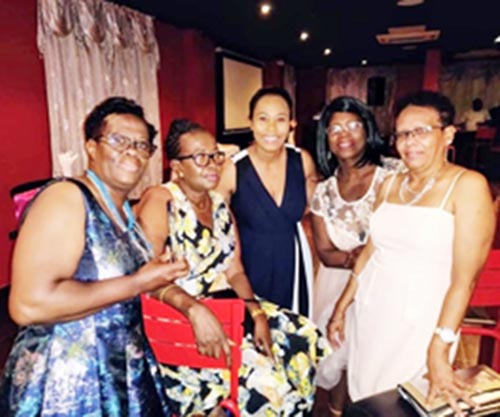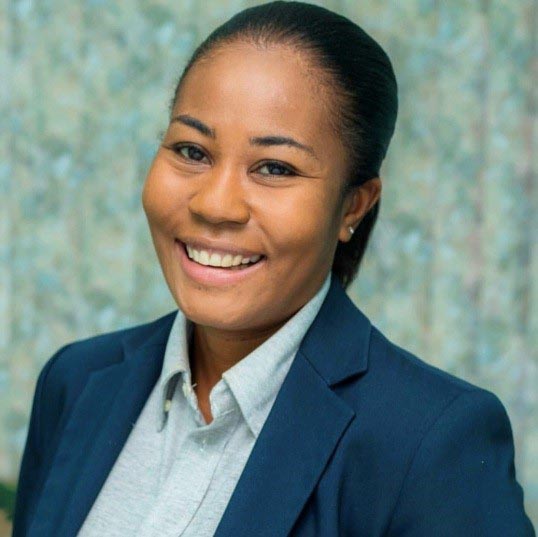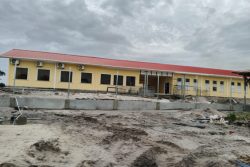The early years
Local rehabilitation services began 71 years ago in then British Guiana in a small room under the X-ray department at the Georgetown Public Hospi-tal (GPH). It was run by three physiotherapists, including Janice Simmons, Principal Physiotherapist, and Jackie Fung-Thompson.
With the need for more human resources in this service recognised, an advertisement was later placed to invite qualified persons to undertake a Physiotherapy Training Programme in the United Kingdom. This sparked the interest of two of the now backbones of the Guyanese rehab community, Hyacinth Massey and Geraldine Mason-Halls. Both of these scholars came back to Guyana to join Simmons and her team in the expansion of local physiotherapy services.

Physiotherapy services progressed in Guyana throughout the 1970s as it adopted the use of ultra violet lighting for the treatment of bed sores, pre and post-operative treatment for surgical patients, as well as Lamaze classes for pregnant women. Therapists often worked from Monday to Saturday, sometimes working late into the night during these times. The 1970s also saw the introduction of specialised services for children with physical disabilities, with the establishment of the Polio Centre in Guyana, now called the Ptolemy Reid Rehabilitation Centre, and a special facility, the Cheshire Home for children and young adults requiring long term care.
Expansion
As more persons became interested in rehabilitation services professionally, by 1985 the number of physiotherapists in Guyana grew to 16, with the inclusion of two now familiar names: Barbara Lawrence and Beverly Nelson. By the end of 1980s, major strides were being made in the development of the local physiotherapy services with the expansion of the George-town unit, as well as the addition of other units across the country. These units included the McKen-zie Hospital unit, operated by Harris, the Best Hospital (West Demerara Hospital) unit, operated by Sharon Harper, and the New Amsterdam Hospital unit, operated by Paula Alexander and later by Nelson.
The 1980s also saw the training of physiotherapy assistants, and by 1990 approximately 30 assistants had officially completed training. The first batch of students was trained by a foreign health science professional in collaboration with PAHO, Barbados and the Univer-sity of Guyana. The introduction of this team of mid-level rehabilitation personnel contributed significantly to the expansion of physiotherapy services in Guyana.
Consequently, the training of physiotherapy assistants was discontinued in the mid-1990s and a new cadre of assistant-level rehabilitation practitioners was introduced, guided by Mason-Halls. This training included basic techniques in physiotherapy, occupational therapy and speech and language therapy. The purpose of this training programme was to provide an important means of strengthening the system of referrals and increasing the coordination between the primary, secondary and tertiary levels of the health care system. These assistants subsequently became the pillars in the establishment of most of the departments in the remote regions of Guyana.
Another programme initiated by Mason-Halls was the Community Based Rehabilitation (CBR) programme. It was started on the East Bank of Demerara for children with disabilities, and to provide services to communities in which rehabilitation services were not easily accessible. Currently, this programme extends nationwide with many CBR centers in all the regions of Guyana, providing both assistance and vocational skills for persons with disabilities.
While Mason-Halls was interested in education, Massey had a love for management. After her five year tenure as a physiotherapist, she was appointed as the Rehabilitation Officer at the National Rehab Complex (Ptolemy Reid Rehabilitation Centre), a position she still holds today. In 1993, she became the Director of Rehabilita-tion Services in Guyana while still holding her position as a rehab officer. She, along with Lawrence, helped in organising the Volunteers Serving Overseas (VSOs) to provide training of other specialties in occupational therapy and speech and language therapy. The initiation of this training was done by a psychologist who came to Guyana and found an interest in Occupational Therapy. She returned to England to retrain in the field and later returned to Guyana to dispense her knowledge. It was during this time that talks about a local degree programme came to light. Massey resigned as the Rehabilitation Director in 1998 and was succeeded by Lawrence. The current Director of Rehabilitation Services is Dr Ariane Mangar.
Degree programme
In 2004, a batch of seven locals was sent to Cuba to train in physiotherapy. In 2009, they returned to Guyana to begin their practice here. Subsequently the Medical Rehabilitation Degree Programme was introduced at the University of Guyana in 2010. This programme offered ease of access, as persons could now be trained locally as physiotherapists, occupational therapists and speech therapists. To date, 35 persons have graduated from this programme at UG.
In 2017, the first batch of locally trained Occupational Therapists graduated. In 2018, the first batch of locally trained Speech and Language Therapists also graduated. This was possible through the dedication of Massey, Lawrence and Dr. Shaine Villareal (a VSO from the Philippines), who is currently the Programme Coordinator at the University of Guyana. This degree programme is continuously growing, with an increasing number of students enrolling each year. Graduates are equipped with a vast knowledge of up-to-date techniques in exercise therapy and modality training in the treatment of prevalent conditions existing in Guyana.
Today, Rehabilitation Services are available in all 10 regions across Guyana, with rehab centres in areas as remote as Bartica, Lethem and Mahdia. Newer rehabilitation services also include audiology, provision of orthotics and prosthetics, and skills training for persons with disabilities.
In addition to the rehabilitation department at the GPH, there is a Sports Clinic run by Nelson which caters to athletes, both recreational and professional. There is also the Palms Rehabilitation Institute managed by Barbara Lawrence, which caters to persons with either brain or spinal cord injuries. Work was also done at the Malnutrition Ward at the GPH to provide for children who had developmental delays due to severe malnutrition. These children were sent to the Convalescent Home, and programmes to train the care givers were established to ensure correct care for these children. Similar programmes were also organised at the David Rose School for the Handicap. (Compiled by the Disability and Rehabilitation Services of the Ministry of Public Health.)








